I have been raising butterflies and moths since I could walk. When I was a child, I would tell all the adults that “I was going to be a Lepidopterist when I grew up.” That statement sure had a way of silencing them!
Well, here I am today, all grown up and still just as enamored by and involved with these insects as I was way back then. In fact, when spring arrives each year, my entire life revolves around rearing these beauties. It is a hobby, a lifestyle.
In the United States alone, there are a whopping 11,000 species of moths and a mere 750 species of butterflies. Despite being the underdogs, butterflies win the popularity contest every time, hands down. For one thing, they are active during daylight hours and make themselves quite conspicuous as they flit from one flower to the next, performing their pollinator duties. Each species is more beautiful and intricately marked than the next.
Yet most people’s opinions about moths are quite the opposite. For one thing, moths are nocturnal, so unless you are out after dark, you probably won’t notice them. Secondly, it’s hard to believe how just a handful of species (fewer than six) out of 11,000 can ruin an insect’s reputation. Yes, there are clothing moths, whose tiny caterpillars have an appetite for natural or blended fabrics, but there is little not to like about the remaining 10,995 species.
Despite the fact that so many of the moth species, no matter how tiny, are elaborately marked, I have always been drawn to the largest and showiest of the bunch. These are the giant silk moths and the sphinx moths that just cannot be ignored, even if you try.
Protection
Unlike the avian world, where colorful male birds show off for their mates or effectively protect a territory, the showy patterns and gaudy colors of the large moths and butterflies serve a completely different purpose: to protect them from predators.
These insects have developed distinct markings on their wings consisting of circular, concentric rings made up of contrasting colors, mimicking an eyeball. Some of these patterns even have a section of white scales in the center, designed to mimic the reflective “glint” in the eye.
Known as eyespots, these ornate patterns serve as protection for the insect when threatened by a predator. Imagine one of these moths, resting on a leaf by day, its wings folded down close to its body. A bird notices the moth and recognizes it as a potential meal. It approaches the insect and begins to peck at it with its beak. Suddenly, the moth’s wings fly open. The upper wings lift to reveal the lower wings, adorned with two huge “eyeballs” staring back. The startled bird suddenly finds itself facing a large, intimidating-looking predator and quickly exits the scene. Mission accomplished.
Purpose
This defense strategy, known as eyespot mimicry, serves several purposes. Not only does it startle predators, but it also serves to draw their attention away from the vital parts of the butterfly or moth. For instance, a tiger swallowtail butterfly has two blue spots just above the tails on its lower wings. Searching for the insect’s head, a predator will aim for these false eyes and end up with a mouth full of wing, the butterfly sacrificing only its tails and escaping to live another day.
The Cecropia moth, the largest in North America with a wingspan of up to 8 inches across, has one of the most amazing eyespot mimicries. The outside of its upper wings, when held together, resembles the head of a snake, complete with eye, nostril and scales! Once these markings have been brought to attention, they are hard to ignore.
Even the caterpillars of these moth species have developed eyespot mimicry. Several species of sphinx moth caterpillars drop the horns located near the rear of their bodies, revealing a convincing shiny eyeball.
Some swallowtail caterpillars have huge eyespots near the front of their bodies (but not actually on their heads). When confronted by a predator, the tiger swallowtail caterpillar swells this area, causing the eyes to enlarge while slowly swaying back and forth, looking incredibly like a snake about to strike.
The spicebush swallowtail also enlarges its eyespots and moves about with a jerking motion resembling a serpent. For a video showing these two species exhibiting this behavior, visit this link https://youtu.be/5I8LqdEOVW8 on my YouTube channel.
Although other animals such as birds, reptiles and fish have also developed similar mimicry defenses, none of them surpass the amazing effectiveness that Lepidoptera exhibit when protecting themselves. The dazzling beauty that Mother Nature has bestowed upon these beautiful insects is what keeps me coming back, year after year after year.






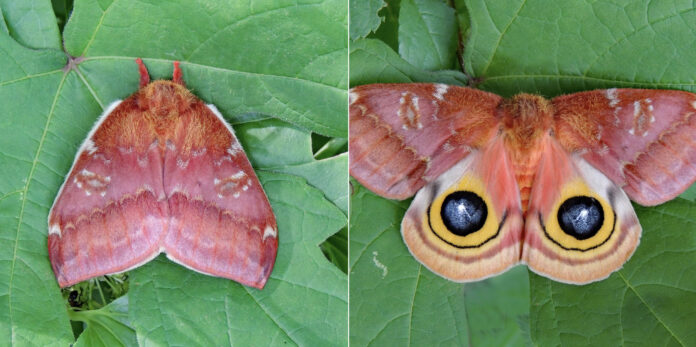
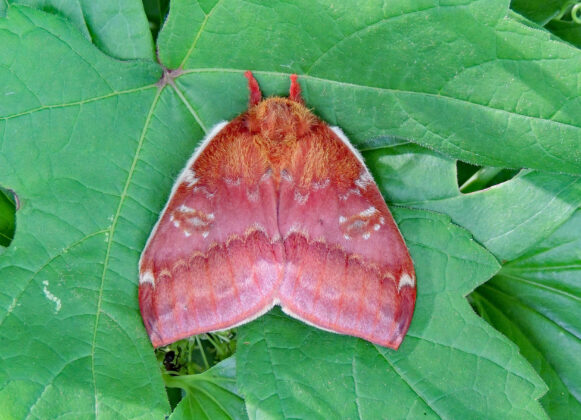

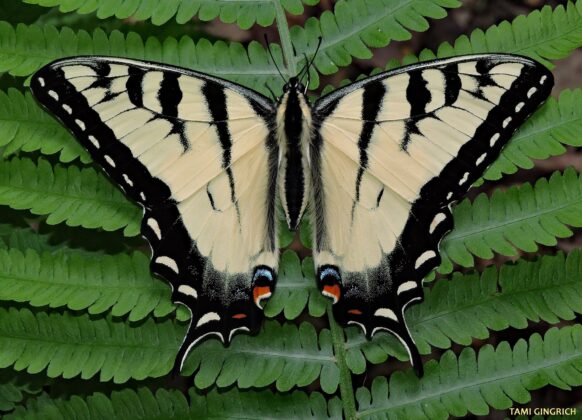


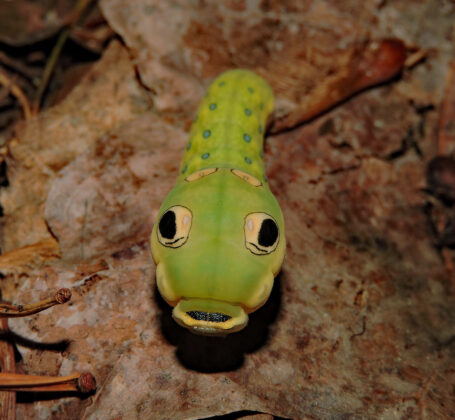

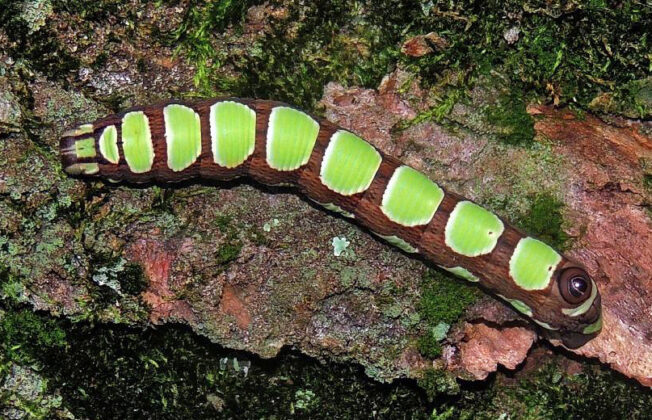








Why no male Io moth shown hmm?